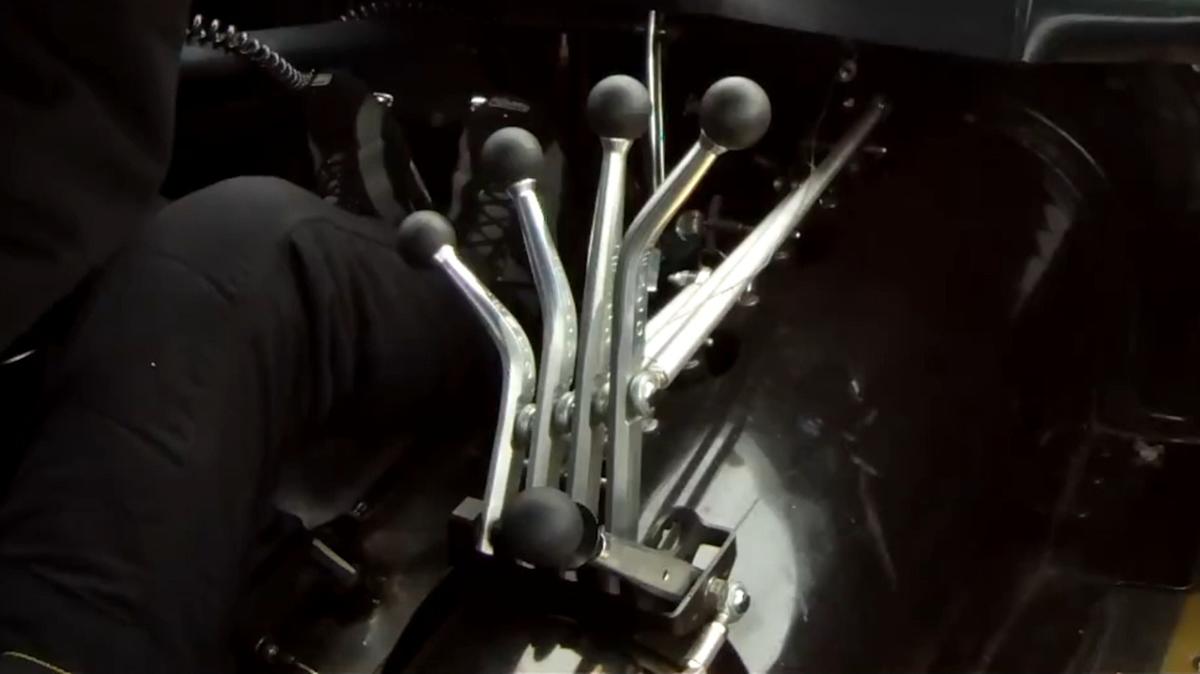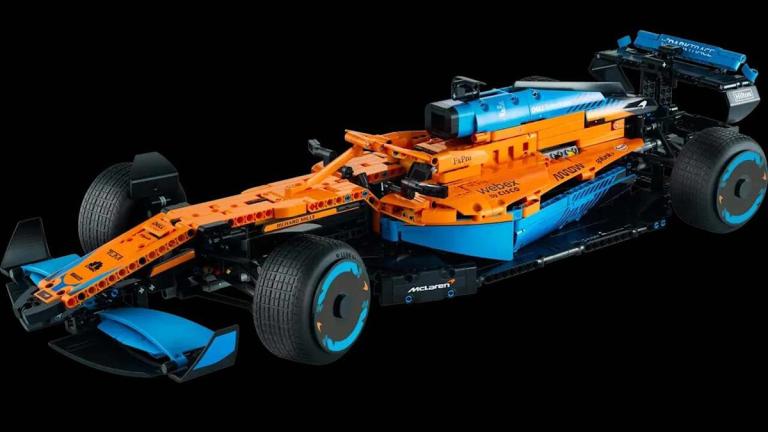
You’re at a car show and you spot a gnarly looking ’69 Mustang with a 14-71 blower sticking out of the hood and rear tires so wide they look like a steamroller drum. It has serious mojo and a stance that angles the roof so much, the driver probably can’t see traffic lights. Peering in the window, everything appears normal except for a row of levers that look like a Terminator hand is waving “Hello.” These levers control the Lenco transmission, which is stout enough to harness the power of a spinning neutron star and convert its energy into quarter-mile domination and tire smoke.
Lencos’ design is unique. It’s as if Lenco racing transmissions snuck up behind some automatic and manual gearboxes in the dark and pilfered the finest attributes of each. From the automatic, it pickpocketed the planetary gears and clutch packs, but left behind the fluid valve-actuated gear selection. From the manual, it nabbed the clutch and flywheel, but ditched the slow H-pattern and dogleg shifters in favor of a series of levers the driver can simply slam into place. Also, the Lenco decided that the clutch directly connected to the engine would only be necessary when starting out in first or reverse. Otherwise, it acts like a dog box transmission, letting you run through the gears sans clutch pedal.
Read more: These Are The Worst Transmission Recalls Of The Last 5 Years
Shifting the bionic fingers
An interior view of a 1946 Mercury Hot Rod with a Lenco Shifter on the floor – SheilaDrives/YouTube
Giving each gear its own lever is kind of an odd decision, though. The setup deserves a place among the weirdest car shifters, looking kind of like the Hurst Lightning Rod from the 1980s Hurst/Olds. Why not a single lever like a sequential gearbox?
Well, the reason many Lenco applications use individual levers is that multi-speed Lencos aren’t just one transmission in a single case, but rather separate two-speed transmissions centipeded together. So as the driver pulls a lever, one of the transmissions goes from “low” to “high,” which then stacks with the ratio in the next transmission, and the next, and so on. It’s separate levers for separate segments, which keeps things simpler, mechanically. Lenco does offer the option of shifting via carbon dioxide pressure from a bottle, but then you wouldn’t get that “robot high five” aesthetic.
To further illustrate what’s going on, let’s use the ratios outlined by Lenco for a four-speed setup, comprisingthree segments stacked together (there’s a fourth segment, but that’s for reverse). The gearbox segments are arranged with the reverse section next to the driveshaft, then a 1.31:1 ratio box, a 1.37:1 ratio box, and a final 1.37:1 ratio box closest to the engine. With all three forward-gear levers in the “unshifted” positions, the ratios combine to create a 2.47:1 first gear. Shift the first lever and you have a 1.80:1 second gear. The second lever produces a 1.31:1 third, and the third lever delivers a 1:1 fourth.
Each transmission segment has its own clutch pack that compresses a rotating sun gear assembly that outputs to the next segment. In theory, you could stack these individual gearboxes to infinity, though the assembly gets quite long once you get beyond four speeds.
Oh, the power your Lenco can wield

YouTuber Cleetus McFarland tests his Lenco transmission as it sits in his shop – Cleetus McFarland/YouTube
While Top Fuel dragsters don’t even bother with transmissions and instead just use a clutch pack, there are plenty of drag-racing series that rely on multiple speeds. Cars in the National Hot Rod Association’s Pro Mod series produce 3,000 hp or more, running the quarter in the fives at over 250 mph. A Tremec T56 Magnum isn’t going to cut it here. Racers looking for ultimate power handling and direct control over shifting turn to Lenco’s magnesium-cased CS1 Standard Design racing transmission, which can handle in excess of 3,500 horses. Lenco also offers more compact CS2, CS3, and CS4 gearboxes, as well the ST1200 Street Strip model and the Lencodrive Automatic.
Scores of drag racers still rely on good old standbys like the 727 Torqueflite, Powerglide, TH350, and TH400 (which can apparently handle the torque of a 27-liter twin-turbo V12 tank engine). They’re great transmissions, especially with all the upgrades available in the aftermarket and even ground-up racing builds from ATI, Coan Racing, and FTI Performance. Still, it’s hard to beat a Lenco’s power handling.
That’s not to say that they don’t require maintenance, however. I called Lenco to see what the fluid change intervals are, and here’s what the company told me: For street use, you need to change it after 500 miles following the install, then every time you change the engine oil. For drag racing, high-horsepower applications necessitate new fluids after each event. Lower-horsepower drag racing can extend that to every two or three events. Always inspect the fluid, though, because if it’s still clean, you’re good. If there’s clutch material floating in there, change it. The recommended fluid is a light-grade petroleum-based motor oil.
Want more like this? Join the Jalopnik newsletter to get the latest auto news sent straight to your inbox…
Read the original article on Jalopnik.



